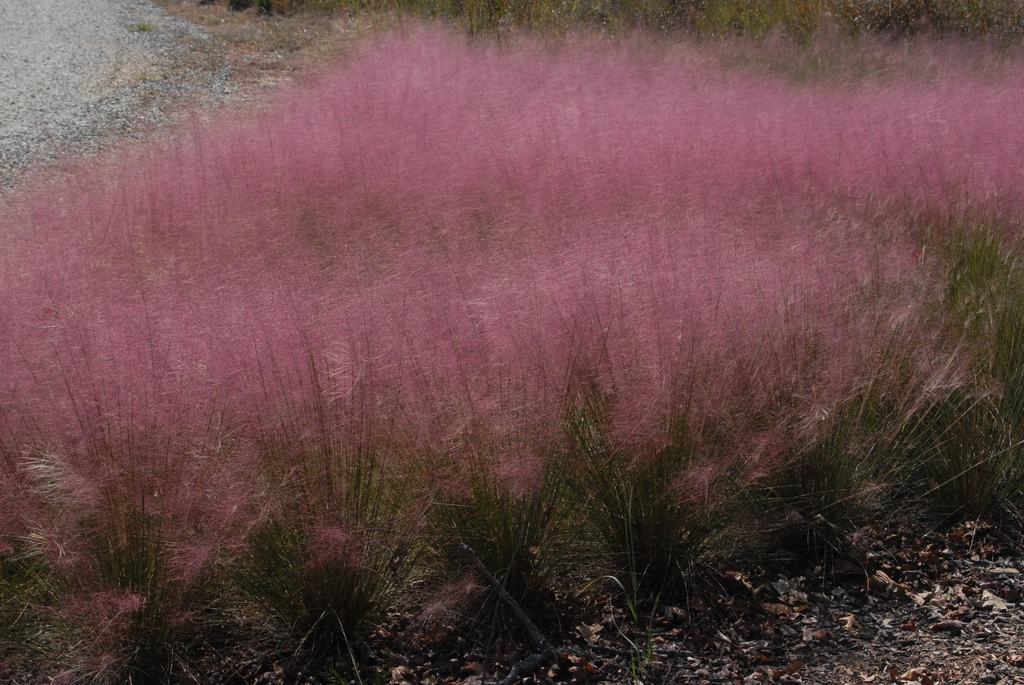Muhlenbergia capillaris, commonly called pink muhly grass is a clump-forming, warm season, perennial grass that is noted for its show-stopper source of late season color. As an ornamental grass, it is a great complement to those landscape beds with fading summer annuals.
Pink muhly grass is best grown in sandy or rocky, dry to medium moisture, well-drained soils in full sun to light shade, although it does best in full sun. It is heat tolerant, as well as humidity and drought tolerant but does best with some constant moisture. Pink muhly grass can grow in poor soil and urban conditions. It does not spread by rhizomes. It can be grown from seed or propagated by division. www.plants.ces.NCSU.edu
Pink muhly grass is in the family Poaceae and grows 2-feet to 3-feet tall. Native to prairies, pine barrens, and open woodlands from Massachusetts to Kansas and as far south as Florida and Texas, it has glossy, wiry, thread-like, dark green leaves and stems that form an attractive basal clump. In the fall, masses of airy, open, loosely branched inflorescences (each to 12” long) in pink to pinkish-red float above the foliage. Tan seed plumes remain attractive in the winter. www.missouribotanicalgarden.org
The genus name honors Gotthilf Henry Ernest Muhlenberg (1753-1815), a Lutheran pastor in Pennsylvania and a distinguished amateur botanist. Pink muhly grass has no serious pests or insect problems but it can be attacked by scale. It provides excellent cover year-round. Seeds are eaten by songbirds and small mammals.
Pink muhly grass provides a spectacular sight in the garden when planted en masse. It is at home in borders, cottage gardens or native plant areas anywhere a mass of color is desired in the garden.
Pink muhly grass can be found in the Brunswick County Botanical Garden.
Information and photos by Jeanne Pavero
North Carolina Extension Gardener Plant Toolbox

Plant close-up, Jim Robbins, CC by-NC-ND 4.0
